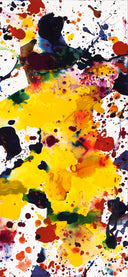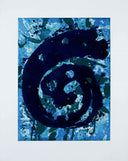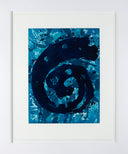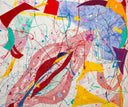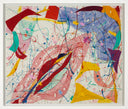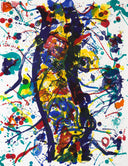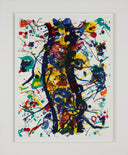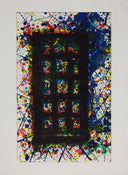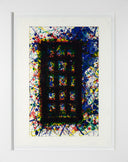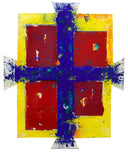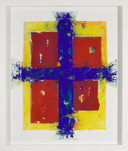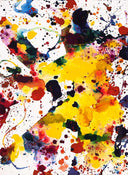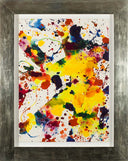About the Artist
A pioneer of color and light on a global stage, Sam Francis (1923 – 1994) forged a career that moved effortlessly between California, Paris, Tokyo, and beyond. Recovering from a World War II injury, he turned to painting and quickly evolved a luminous language of splashed pigment, atmospheric whites, and fields of radiant blues that bridged Abstract Expressionism, Color Field painting, and East–West aesthetics. His practice—restless, experimental, and relentlessly international—anticipated today’s interconnected art world and continues to resonate with collectors attuned to materiality, scale, and cross-cultural dialogue.
Francis’s work is anchored in major museum collections worldwide, underscoring his enduring critical stature. Holdings and dedicated entries can be found at The Museum of Modern Art, New York; Tate, London; the Centre Pompidou, Paris; the San Francisco Museum of Modern Art; and the Los Angeles County Museum of Art. These institutions collectively chart the breadth of his canvases, works on paper, and prolific printmaking practice.
Exhibition history further cements his legacy. Landmark retrospectives include the touring show “Sam Francis: Paintings 1947–1990” organized by MOCA Los Angeles (2000–2001), and an earlier museum retrospective that traveled from the Albright-Knox to the Corcoran, Whitney, Dallas Museum of Fine Arts, and the Oakland Museum (1972). In the 21st century, scholarship has deepened around his lifelong dialogue with Japan, most recently in “Sam Francis and Japan: Emptiness Overflowing” at LACMA (2023), highlighting his engagement with ma and the eloquence of negative space.
Francis remains a force in today’s market, prized for museum-grade scale and unmistakable chromatic intensity. His auction record was set in 2022 when Composition in Blue and Black (1955) achieved $13,557,500 in Christie’s landmark Paul G. Allen sale, affirming demand at the very top of the field while catalyzing renewed attention across periods and media. For collectors, Francis offers both blue-chip stability and the immediacy of gesture that speaks to contemporary abstraction.
From the ecstatic blues of the 1950s to later, spare explosions of color, Francis’s paintings feel startlingly current, proof that radical openness to place, process, and influence never goes out of style. For today’s connoisseurs, he is as relevant as ever: a cornerstone of postwar art whose work still floods rooms (and collections) with light.



